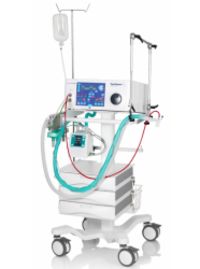An ever-expanding array of applications have been developed for ultrasound, including its goal-directed use at the bedside, often called point-of-care ultrasound (POCUS). In Australia, New Zealand, the United Kingdom, and many other European and Asian countries, neonatologist-performed, targeted POCUS is now a routine practice in neonatal intensive care units (NICUs).1 Although neonatologist-performed functional echocardiography has been at the forefront of the global growth of POCUS, a rapidly growing body of evidence has also demonstrated the value of non-cardiac applications, including guidance of central catheter placement and lumbar puncture, endotracheal tube localisation and rapid assessments of the brain, lungs, bladder and bowel.2
In the United States, POCUS is widely used in paediatric emergency medicine and paediatric critical care medicine (PCCM), while adoption in perinatal-neonatal medicine (PNM) has been slower. A recent survey revealed that more than 90 percent of directors of U.S. PNM and PCCM fellowship programmes recommended that fellows and attendings should be trained in POCUS, but only 37% of PNM programmes were using it for procedural guidance and 29% for diagnosis and management, versus 95% and 76% respectively for PCCM programmes.3 Barriers included lack of equipment and lack of personnel to train physicians in its use.
Drawing on the author’s experience in implementing and leading POCUS programmes in two U.S. children’s hospitals, this article provides a five-step roadmap to adoption of this imaging modality to improve the safety and quality of care in the NICU. Physician training, the most active uses and opportunities for POCUS in neonatal medicine and case examples are discussed. The article also provides guidance on selecting a point-of-care ultrasound system for neonatology.
Step 1: Examine the benefits of point-of-care ultrasound in the NICU
Because portable ultrasound machines can be brought to the bedside, POCUS is often the preferred imaging study for neonates, particularly critically ill, preterm or very-low-birth babies who may be too fragile to transport safely to other areas of the hospital for computed tomography (CT) or magnetic resonance imaging (MRI). For example, recent data note that point-of-care lung ultrasound (LUS) is as good, if not superior, to x-ray for the diagnosis of pneumonia in newborns, as compared to CT in older children.4 Diagnostic characteristics of LUS for transient tachypnoea of the newborn, respiratory distress syndrome, meconium aspiration syndrome and pleural effusion have been described and 5,6,7 a LUS score to predict surfactant need in very preterm neonates was recently published.8
POCUS also aids clinical decision-making in time-critical emergencies by enabling rapid bedside evaluation and the ability to make serial assessments as needed. Transitional cardiac physiology after birth and during illness often requires repeat measurements to help determine real-time haemodynamics. Several examples of the benefits of cardiac POCUS have been published, such as assessments of the patent ductus arteriosus, ventricular function, cardiac filling and volume assessment.9,10,11 A number of recent publications have also highlighted the potential of POCUS to supplement or even replace certain radiographic assessments. For example, a recent meta-analysis found that bowel ultrasound is an important imaging tool for the diagnosis and management of infants with necrotising enterocolitis (NEC), one of the most severe gastrointestinal disorders affecting neonates, offering additional detail over plain abdominal radiographs.12 A major advantage of US over plain radiography is that it can depict intraabdominal free fluid, bowel wall thickness and bowel wall perfusion.13
A comparative study by our team revealed that the use of color Doppler ultrasound to interrogate specific, suspicious areas of bowel for perfusion is more accurate than abdominal radiographs in depicting bowel necrosis in NEC.14
Recent literature has also demonstrated the value of POCUS for the guidance of commonly performed procedures in the NICU, including obtaining vascular access and lumbar puncture (LP). Although LP is commonly performed using “blind” landmark guidance, successful identification of landmarks has only been shown to be accurate 30% of the time.15 POCUS offers a safe, easy alternative to the blind method and in adults, has been linked to reductions in the number of attempts and interspaces accessed.16 Accurate placement of the endotracheal tube (ETT) in critically ill neonates is another challenging procedure that currently requires radiographic confirmation of tip location. We recently demonstrated that POCUS may offer a quick, alternative method of visualising ETT positioning in preterm and term infants.17
Step 2: Develop and leverage interdepartmental collaboration
Paediatric emergency medicine and paediatric critical care are two of the most prominent paediatric specialties that have already developed ultrasound programmes. Partnering with colleagues from these departments—and their counterparts in adult emergency medicine and critical care—enables neonatologists to follow the same pathways to ultrasound programme development that have already worked for other specialties at their institution. An excellent way to network with colleagues from these departments is to ask questions: how did they make the clinical and economic case to hospital leaders that POCUS is important? What kind of equipment do they recommend? How did they lobby for funding? And how did they develop the programme’s structural components, such as storage of data, basic documentation for credentialling and for competency, and developing educational programming for fellows and interested faculty?
It is also crucial to establish good working relationships with cardiology and radiology. Partnering with these two departments has a number of benefits, including assisting with the development of the training programme for neonatology, gaining access to the right type of equipment, and also very importantly, having a place to store the images. Seamless access to the images captured by trainees is an essential component of the education process because the trainers need to be able to review the images to validate if the trainees have reached a certain level of competency.
Step 3. Use didactic and simulation-based training
One of the key considerations for neonatologists interested in establishing a new ultrasound programme is how to build and expand training capacity. One frequently used approach is to identify and if necessary, train an “ultrasound champion,” who then trains a small cohort of clinicians. After acquiring competency, the trainees become the trainers and teach the skillset to a new cohort of clinicians. Some ultrasound manufacturers provide training to customers who purchase their equipment. Colleagues from other departments in which ultrasound is already widely used can also serve as trainers.
Our experience suggests that the training curriculum should include a variety of teaching methods, including didactic learning, stimulation-based training (if available at the institution) and hands-on bedside lessons to provide practical experience. Quality assessment and quality improvement oversight by the training programme director should also play a significant role in both the initial training and continuing development of the programme. Our training programme began with training our neonatology fellows at several teaching venues, including small courses and workshops within our institution as well as larger courses at other local centres. Later the training expanded system-wide to include faculty.
Step 4. Target a few high-yield applications first
Although trainees often want to start with learning how to image the heart, our experience suggests that starting with a few more basic, but clinically valuable applications of POCUS makes it easier for new users to get comfortable with the equipment and the various imaging techniques and probes. In our fellowship programme, we introduce new skills every six months, starting with easy-to-learn non-cardiac applications, such as imaging the bladder to determine if neonates are retaining urine. Not only can ultrasound reliably determine the size and location of the bladder and the volume of urine, but POCUS is also an ideal tool for guiding bladder aspiration through suprapubic urine collection, with a success rate approaching 100%.2
The evaluation of the lung by POCUS is another relatively simple imaging technique with high utility in the NICU, given that acute respiratory compromise often requires rapid diagnosis and treatment. The presence of air or fluid (such as blood, transudate or exudate in the pleural space) is readily discernible by ultrasound, using a high frequency transducer, such as 7-15 MHz hockey stick or equivalent linear ray transducer.
POCUS can also help improve the speed, safety and success of vascular access, which can be lifesaving for many sick neonates. In many NICUs, central lines, such as umbilical venous catheters (UVC), umbilical arterial catheters (UAC) and peripherally inserted central catheters (PICC), are placed blindly and confirmed with a single radiograph—a technique that often results the need for repositioning of improperly placed lines and repeat X-rays. In one study, about 30% of the radiographs were read as normal, but actually had the UVC tip in the right atrium when checked with ultrasound.18 Our team has shown that the use of ultrasound guidance results in faster placement and fewer manipulations and radiographs for umbilical catheters and PICC, versus blind techniques.19,20
Head ultrasound (HUS) is another of the easiest techniques for neonatologists to learn because they are already quite familiar with viewing and interpreting cranial ultrasound images for common pathology. POCUS can provide excellent views of the brain’s architecture (particularly the two ventricles) and is particularly valuable when suspected haemorrhage may be causing deterioration or haemodynamic instability. LUS techniques hinge on establishing stable, upright views of the two hemispheres and axial views of the posterior fossa. However, it is important to recognise that HUS is not sensitive for the evaluation of increased pressure, cerebral oedema or stroke, and other modalities, such as CT or MRI, are recommended in such cases.
Step 5. Celebrate successes and expand the programme
One of the best ways to achieve ongoing support for a new POCUS programme is to share stories of lives saved, time-sensitive treatments accelerated and unnecessary procedures and expenses avoided through the use of ultrasound at the bedside. For example, at our hospital, a preterm infant had severe hydrops at delivery, with extensive fluid in the chest and abdomen that was compromising his breathing. Because we had POCUS at the bedside, we were able to rapidly identify and target the safest areas for drainage without risking perforation of the infant’s lungs or bowel. The fluid was safely drained under ultrasound guidance, dramatically improving the infant’s breathing and saving his life.
In another recent case, one of our surgeons was unclear whether or not to operate on an extremely premature infant who had developed a severe infection and a distended abdomen. Using POCUS, we performed a bowel examination, which did not reveal any obvious bowel disease, but did show poor peristalsis. Based on these findings, the surgeon was able to avoid performing an unnecessary operation on this very high-risk patient—and the infant was able to convalesce safely in our NICU with medical management and ultimately made a full recovery.
Not only will alerting colleagues to the programme’s successes re-motivate clinicians to consider ultrasound for unusual or challenging cases, but publicising the clinical and economic value of this technology to hospital leadership through compelling stories will also help accelerate systemwide adoption of POCUS. As new applications and adoption of point-of-care ultrasound continues to gain acceptance in paediatric and neonatal medicine throughout the world, a rapidly growing body of evidence suggests that the result will be faster, safer and more successful diagnosis and treatment of our tiniest patients.
References:
1 Jankowich M, Gartman E (eds.). (2015). Ultrasound in the Intensive Care Unit. Respiratory Medicine, (2015) DOI 10.1007/978-1-4939-1723-5_16
2 Kim JH, Shalygin N, Safarulla A (November 5th 2018). Current Neonatal Applications of Point-of-Care Ultrasound, Current Topics in Intensive Care Medicine. IntechOpen. Available from: https://www.intechopen.com/books/current-topics-in-intensive-care-medicine/current-neonatal-applications-of-point-of-care-ultrasound
3 Nguyen J, Amirnovin, R, Ramanathan R, Noori S. The state of point-of-care ultrasonography use and training in neonatal-perinatal medicine and pediatric critical care medicine fellowship programs. J Perinatol. 2016; 36: 972–976.
4 Ambroggio L, Sucharew H, Rattan MS, et al. Lung ultrasonography: a viable alternative to chest radiography in children with suspected pneumonia? J Pediatr. 2016;176:93–98.e7
5 Liu J, Chi JH, Ren XL, et al. Lung ultrasonography to diagnose pneumothorax of the newborn. Am J Emerg Med. 2017;35(9):1298–1302pmid:28404216.
6 Liu J, Cao HY, Fu W. Lung ultrasonography to diagnose meconium aspiration syndrome of the newborn.J Int Med Res. 2016;44(6):1534–1542pmid:27807253.
7 Liu J, Chen XX, Li XW et al. Lung ultrasonography to diagnose transient tachypnea of the newborn. Chest. 2016;149(5):1269–1275pmid:26836942
8 De Martino L, Yousef N, Ben-Ammar R et al. Lung ultrasound score predicts surfactant need in extremely preterm neonates. Pediatrics. 2018;142(3):e20180463.
9 Sehgal, A., Paul, E. & Menahem, S. Functional echocardiography in staging for ductal disease severity. Eur J Pediatr 172, 179–184 (2013).
10 Poon WB, Wong KY. Neonatologist-performed point-of-care functional echocardiography in the neonatal intensive care unit. Singapore Med J. 2017;58(5):230–233.
11 Sehgal A, McNamara PJ. Does echocardiography facilitate determination of hemodynamic significance attributable to the ductus arteriosus?. Eur J Pediatr 168, 907–914 (2009).
12 Cuna AC, Reddy N, Robinson AL et al. Bowel ultrasound for predicting surgical management of necrotizing enterocolitis: a systematic review and meta-analysis. Pediatr Radiol 48, 658–666 (2018).
13 Kim WY, Kim WS, Kim IO, Kwon TH, Chang W, Lee EK. Sonographic evaluation of neonates with early-stage necrotizing enterocolitis. Pediat Radiol 2005; 35(11): 1056–1061.
14 Faingold R, Daneman A, Tomlinson G, Babyn PS, Manson DE, Mohanta A et al. Necrotizing enterocolitis: assessment of bowel viability with color doppler US. Radiology 2005; 235(2): 587–594.
15 Furness G, Reilly MP, Kuchi S. (2002), An evaluation of ultrasound imaging for identification of lumbar intervertebral level. Anaesthesia, 57: 277-280.
16 Nomura JT, Leech SJ, Shenbagamurthi S et al. (2007), A Randomized Controlled Trial of Ultrasound‐Assisted Lumbar Puncture. Journal of Ultrasound in Medicine, 26: 1341-1348.
17 Dennington D, Vali P, Finer NN, Kim JH. Ultrasound confirmation of endotracheal tube position in neonates. Neonatology. 2012;102(3):185-9. Epub 2012 Jul 6.
18 Karber BCF, Neilsen JC et al. Optimal radiologic position of an umbilical venous catheter tip as determined by echocardiography in very low birth weight newborns. Journal of Neonatal-Perinatal Medicine. 2017;10(1):55-61.
19 Fleming SE & Kim JH. Ultrasound-guided umbilical catheter insertion in neonates. J Perinatol 31, 344–349 (2011).
20 Katheria AC, Fleming SE & Kim, JH. A randomized controlled trial of ultrasound-guided peripherally inserted central catheters compared with standard radiograph in neonates. J Perinatol 33, 791–794 (2013).

























